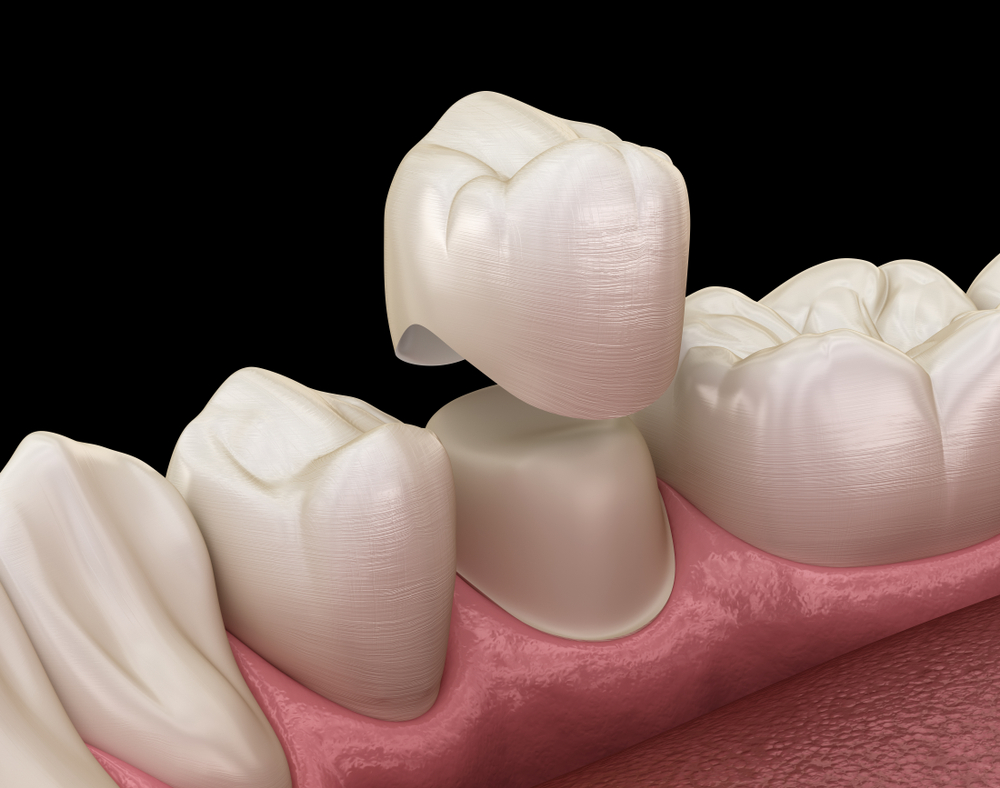
Prosthetic crowns are prosthetic restorations used in the case of the loss of natural tooth tissues - enamel and dentin - as a result of carious disease, trauma or developmental disorders. In the case of advanced changes in which it becomes impossible to apply composite materials in the form of fillings performed by a doctor in one visit, the procedure of choice is the preparation of the tooth for a prosthetic crown.
The most popular type of this restoration covers all the tooth surfaces with a layer of material imitating the strength and aesthetic effects of enamel and dentine. Prosthetic crowns belong to the group of permanent prostheses, meaning fixed permanently in the mouth, so that the patient cannot remove it without the help of a doctor. As mentioned earlier, the procedure consists of two main stages – tooth preparation, involving the removal of calcified tissues, making room for the material of the future crown and smoothing out any sharp edges and unevenness. The second stage is the cementation of the finished work that was produced in the prosthetic laboratory. While waiting for a ready-made restoration, the prepared tooth is secured with a temporary crown that provides the patient with the comfort of maintaining the smile aesthetic and the functionality of chewing and speech.
Prosthetic crowns, as described in the introduction, are designed to restore the strength and aesthetics of the tooth. This is ensured by using metal or construction ceramics to make the crown. Appropriately designed metal alloys and oxide ceramics have high resistance to forces generated during chewing, which protects the remaining natural tissues of the tooth and ensures the longevity of the completed restoration. For the crown to provide perfect aesthetics, the foundation is covered with a layer of so-called veneering - a special porcelain, which has optical properties similar to natural tooth enamel.
The structure of a prosthetic crown can be made of multiple materials, but to simplify this issue, you can divide them into two main groups:
The materials used to make prosthetic crowns can therefore be a combination of a metal core (i.e. a foundation responsible for strength) with a porcelain layer in a color matched individually for each patient or an all-ceramic restoration. The latter, largely made using specialized computer-controlled methods, is the most aesthetic form of reconstruction of damaged teeth, thanks to the presence of many layers of ceramic materials that differ in their light translucency. Therefore, it is possible to make a crown that perfectly matches the rest of the patient's teeth.
Depending on the condition of the tooth and the surrounding tissues, the prosthetic crown may cover a living, vital tooth, as well as a previously root-canal-treated tooth, i.e. without the caries infected pulp. In this case, the procedure for making the crown is preceded by the preparation and placement of a crown-root post. The main purpose of a post is to increase crown retention. In the case of root-canal-treated teeth, too much tooth tissue has been lost, and therefore, depending on the clinical situation, the posts are made individually in the prosthetic laboratory or standard FRC (Fiber-reinforced composite) posts are used. The aesthetics and function remain the same as with crowns on living teeth. A prerequisite for reconstructing a tooth with a crown are healthy periapical periodontal tissues, structures surrounding the tooth root. In the case of pulp diseases, injuries or other causes, inflammation forms in the periodontium and bone surrounding the root apex. Endodontic treatment is needed to heal this inflammation and the surrounding bone structure, which will then allow for the final prosthetic restoration to be made.
A great achievement in modern dentistry is the reconstruction of a missing tooth with the use of a single crown. For this purpose, implant systems are used, which consist of placing the prepared crown on the implant inserted in the bone of the maxilla or mandible.

